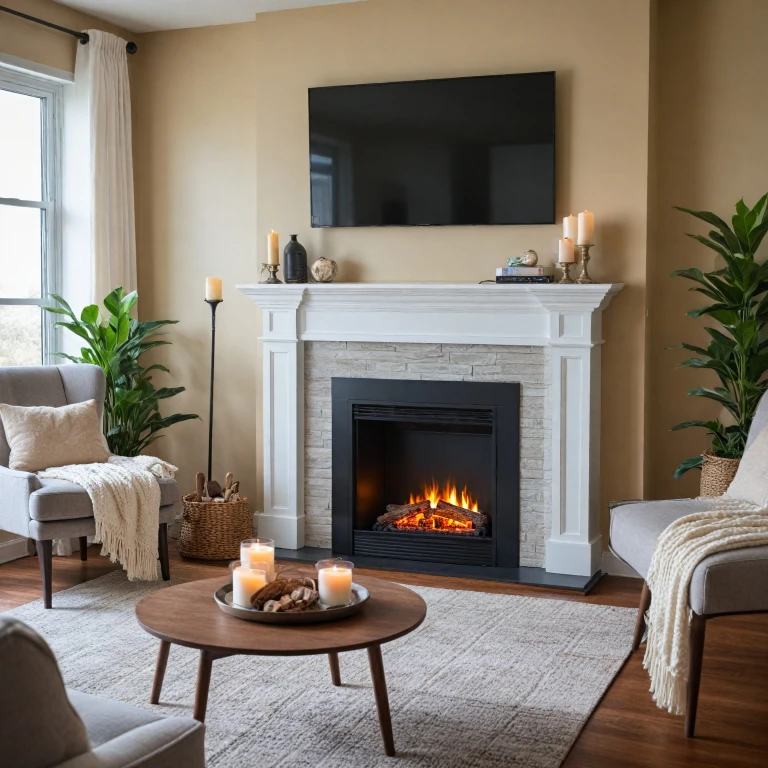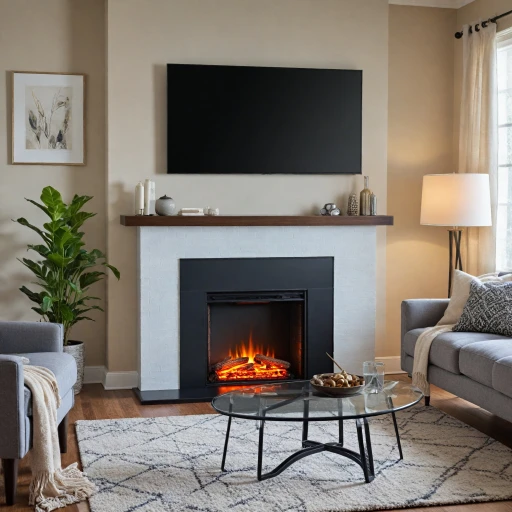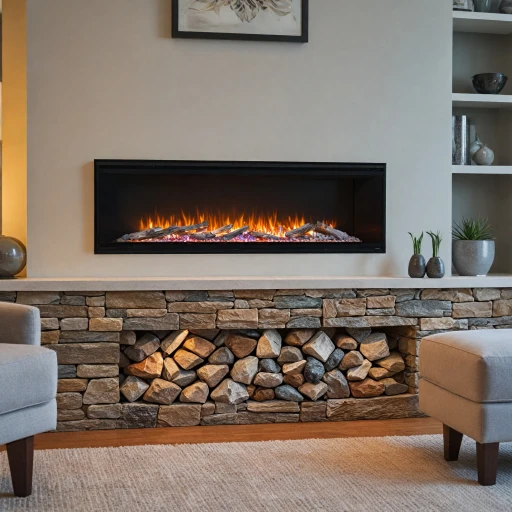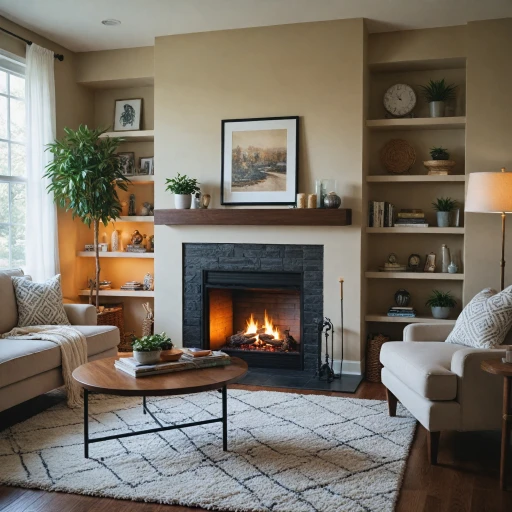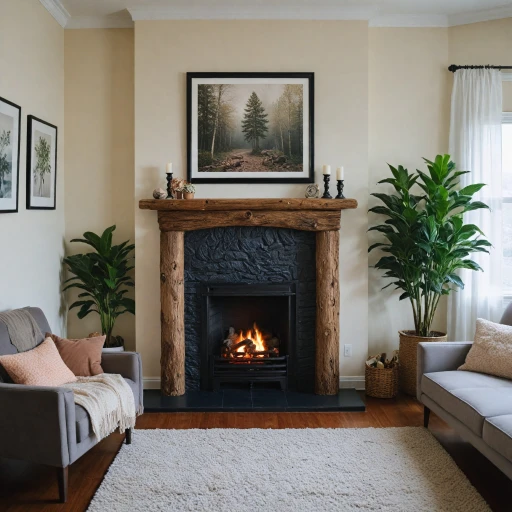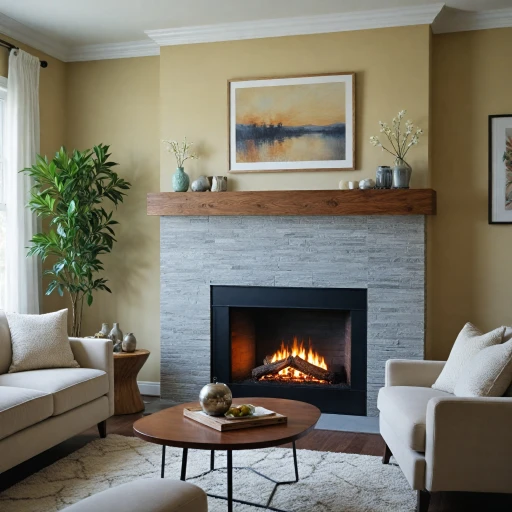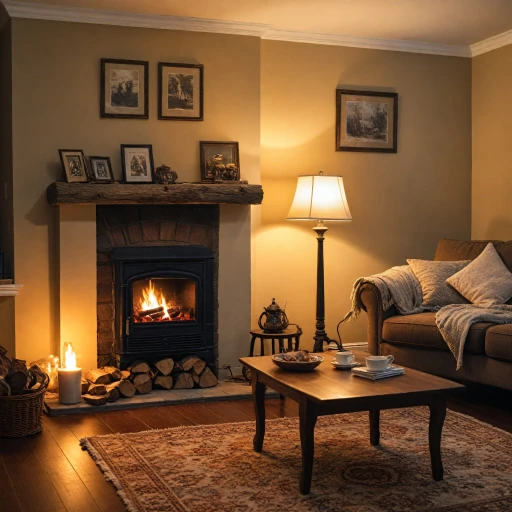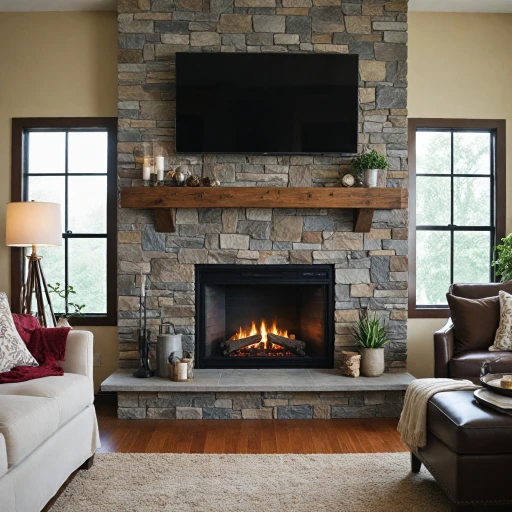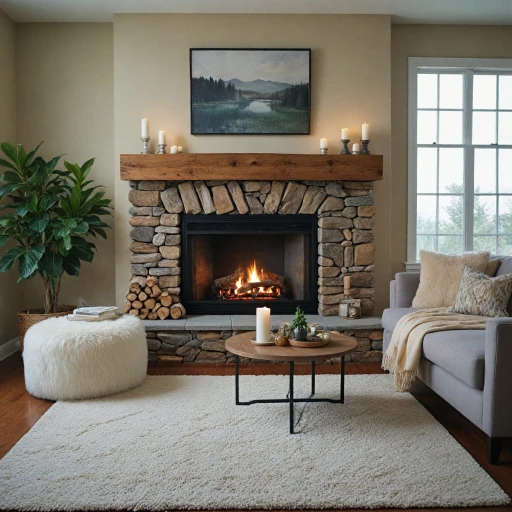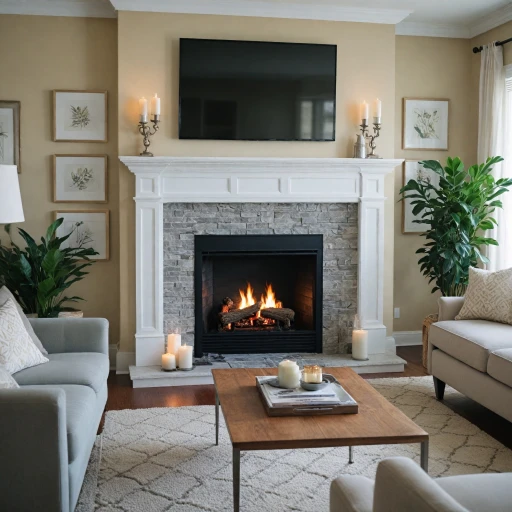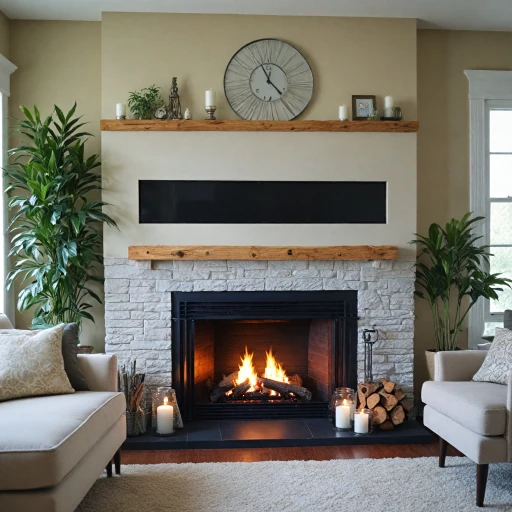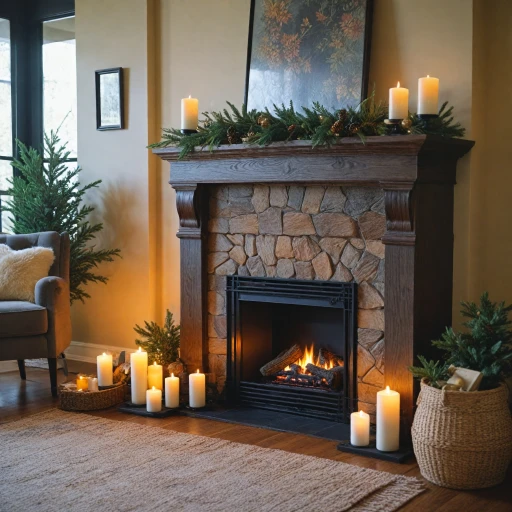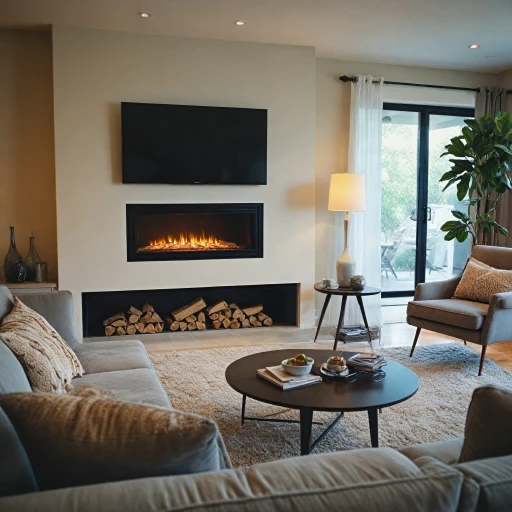
Understanding the Role of a Blower in Electric Fireplaces
Powering Up Your Electric Fireplace Experience
Imagine sitting by your electric fireplace, feeling toasty warm as it efficiently circulates warm air throughout your room. If you’re wondering how that’s possible, you may want to consider learning about blowers. These components elevate your cozy setup from good to great, turning passive heat into a robust whole-room experience. Electric fireplaces themselves are marvelously low maintenance compared to their wood or gas counterparts. But adding a blower—or a blower fan, as some call it—elevates its effectiveness. Blowers aren’t just fans; they’re designed to enhance your fireplace's performance by dispersing the heat more evenly. Without a blower, your fireplace acts like a background heater, quietly warming the space around it. While this natural warmth feels nice, it doesn't necessarily fill a larger room as effectively as you might wish. Adding a blower fan can take things up a notch by circulating the heat more evenly in your room. It actively moves air across the heater and into your space, making each corner feel just as inviting as the hearth itself. The blower kit essentially includes a fan (or sometimes fans) that draw cool air from your room, pass it over heating elements within the fireplace, and push it's warm delights back into your living space. If you’re in the process of selecting or upgrading your electric fireplace, think of the blower as the engine that complements your fireplace's aesthetic bodywork. Whether you’re taking a fresh look at your heat system or deliberating on whether or not to include a blower, remember to consider factors like room size, placement of your fireplace, and your personal heating needs. If you're curious about transforming and maximizing your fireplace's efficiency, you might find it helpful to review this comprehensive guide on how replacing your Heatilator fireplace cover can further improve your setup. In the following sections, we'll discover the benefits a blower can bring, explore the types of blowers out there, and tackle some handy tips for installation and maintenance. With the right approach, you’ll enhance both your comfort and the ambiance of your home.Benefits of Adding a Blower to Your Electric Fireplace
Why a Blower Makes a Difference
Adding a blower to your electric fireplace can significantly enhance its performance and efficiency. A blower, sometimes referred to as a fan or blower kit, helps distribute warm air more evenly throughout the room. This can transform your fireplace from a simple decorative piece into a functional heating solution.
Improved Heat Distribution
One of the primary benefits of a blower is its ability to circulate air effectively. Without a blower, the heat from your electric fireplace tends to rise and stay near the ceiling. A blower fan pushes this warm air out into the room, ensuring a more consistent temperature throughout your space. This is particularly beneficial in larger rooms where heat distribution can be a challenge.
Energy Efficiency
By improving heat distribution, a blower can also contribute to energy savings. When warm air is evenly spread, your heating system doesn't have to work as hard to maintain a comfortable temperature. This can lead to reduced energy consumption and lower utility bills over time. Additionally, some blower kits come with variable speed settings, allowing you to adjust the airflow based on your needs, further optimizing energy use.
Enhanced Comfort
With a blower, your electric fireplace can provide a more comfortable and inviting atmosphere. The consistent warmth can make your living space feel cozier, especially during colder months. Whether you're using a wood stove, gas fireplace, or a modern electric model, a blower can enhance the overall comfort level of your home.
Cost Considerations
While there is an initial investment involved in purchasing a blower kit, the long-term benefits often outweigh the costs. Many blower kits, such as those from brands like Heat Glo and Quadra Fire, offer reliable performance and durability. It's important to consider the price and features of different models to find one that suits your needs and budget.
In conclusion, adding a blower to your electric fireplace can enhance its functionality and efficiency, providing better heat distribution, energy savings, and increased comfort. Whether you're looking to upgrade an existing fireplace or install a new one, a blower is a worthwhile addition that can improve your home's heating experience.
Types of Blowers for Electric Fireplaces
Diverse Options for Fireplace Blowers
When it comes to choosing the right blower for your electric fireplace, knowing the types available can significantly aid your decision-making process. Here's a look at some of the most popular options:
- Built-in Fans: Many electric fireplaces come with built-in blower fans. These are designed to circulate warm air throughout the room effectively. If your unit already includes one, check its performance before considering an upgrade.
- Aftermarket Kits: If your fireplace didn't come with a blower, aftermarket blower kits like GFK, heat powered, or magic heat options are available. These kits often come with everything necessary for installation, including the blower motor and variable speed controls.
- Surface-Mounted Blowers: Ideal for wood burning and gas fireplaces, surface-mounted blowers can be attached directly to your fireplace's exterior. They're a great pick if you want to enhance your wood stove's or gas fireplace's heating efficiency.
- Universal Blower Kits: Universal kits can adapt to various fireplace models, offering flexibility for those with custom installations. Be sure to check compatibility with your specific unit before purchasing.
The right blower can transform your fireplace into an efficient heating solution, pushing warm air further into your space and making even large rooms feel cozy. Whether you're warming up a chilly winter evening with a wood stove or enhancing the heating capacity of a gas fireplace, the right fireplace blower will fill your space with comfortable warmth.
Installation Tips for Fireplace Blowers
Getting Ready for Installation: Steps and Insights
When you're set to install a blower into your fireplace, understanding the nuances can make the process smoother. Whether your fireplace is gas, wood, or electric, incorporating a blower kit can seriously amp up the warm air circulation in your room. Here's how to get started. First, always refer to the manufacturer's instructions specific to your product. The blower motor and fan kit might come with unique tools or parts, which need your attention to properly integrate into your existing setup.- Placement is Key: Ensure your blower fan is positioned where it can effectively gather heat from your fireplace and distribute it into your room. Usually, this means near the bottom of the unit, where the blower can pull in cool air, heat it, and then push that warmed air back out.
- Power Source: Most blowers require an electrical outlet nearby, so check your current electric outlet situation. If a fireplace is wood-burning or uses another fuel type, you may want to consult an electrician to avoid any connectivity issues.
- Blower Kits: Many blowers come in ready-to-go kits, like the GFK or proprietary branded stoves, making installation more straightforward. Kits typically include everything needed, from mounting brackets to variable speed controls.
- Custom Fitting: For those with uniquely shaped fireplaces or specialized models like heatilator or quadra fire, you might need custom blower kits. They’re designed to ensure a snug fit without compromising the unit’s function.
Maintenance and Troubleshooting for Fireplace Blowers
Keep Your Blower in Top Shape
A well-maintained blower kit can extend the life of your electric fireplace and ensure optimal performance. Regular maintenance is key to keeping the blower fan running smoothly, reducing noise levels, and ensuring efficient heat distribution in your room.
Start by cleaning your blower motor. Dust and debris can accumulate over time, impacting performance. A soft brush or vacuum cleaner can help keep the fan, motor, and surrounding areas clear, improving airflow and heat output. Remember to disconnect the power before cleaning, ensuring your safety and preventing any electrical hazards.
Check for any loose parts. The vibrations and movements from regular operation can sometimes cause bolts or screws to loosen. Tighten them up, keeping in mind not to over-tighten, which could damage the components.
Lubrication is another factor in reducing friction and noise while extending the lifespan of the moving parts. However, only use the recommended lubricant as specified by the manufacturer to avoid causing damage or voiding warranties.
Troubleshooting common issues is also essential for maintaining your fireplace blower. If your fan isn't operating as expected, check for any obstructions, unusual noises, or erratic performance. Sometimes, simply switching to a different speed setting can resolve minor issues due to a variable speed blow malfunction.
Having a maintenance routine in place not only saves money on potential repairs down the line but also guarantees consistent and effective heat distribution from your electric fireplace.
Cost Considerations and Energy Savings
Financial Considerations and Smart Savings
Investing in a blower kit for your electric fireplace is a smart choice, considering the warmth and comfort it brings to your home without the financial burden often associated with traditional heating options. Here's what you need to know about finances when adding a blower:- Initial Cost: The price of fireplace blowers varies widely depending on the type, with some blower kits starting as low as $100, while others might go up to $500 or more. Although it may seem like a significant upfront investment, remember that this addition enhances the efficiency of your electric fireplace.
- Energy Efficiency: Blowers, such as those in a gfk fireplace or a quadra fire unit, use a fan to distribute warm air more evenly throughout the room. This increased efficiency can result in reduced heating costs in the long run. Since the electric fireplace blower helps circulate heat effectively, you might find yourself lowering the thermostat, saving on electric bills.
- Maintenance and Durability: While the blower motor and fan kit might require occasional maintenance, such as cleaning or replacing parts, this is minimal compared to the costs involved with repairing a central heating system or replacing wood stove parts.
